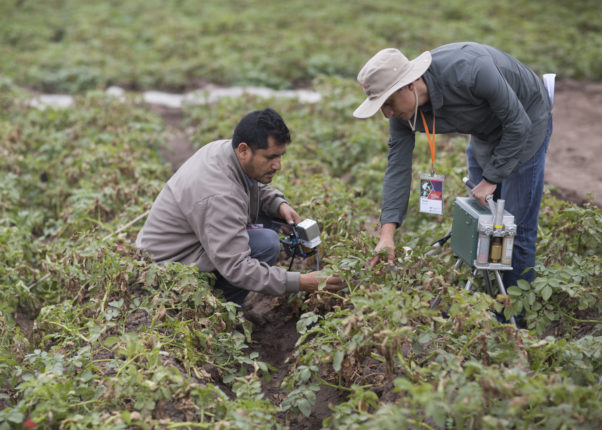Developing digital tools to optimize water use in agriculture
Potato has good potential to help the world meet that challenge, since it produces more calories per liter of water than other major staple crops. Scientists at the International Potato Center (CIP) are trying to enhance that potential through the development of digital tools to optimize the use of water in irrigation.
A team of researchers led by crop ecophysiologist David Ramírez has used a combination of conventional and thermal cameras to study how potato plants react to water stress. In field studies in the rain-deprived coastal desert of Peru, they shot infrared and visible images of a potato crop at different times of the day to detect changes in the temperature of the leaf canopies that are part of potato’s response to drought stress. They also developed open-access software called Thermal Image Processor (TIPCIP) to analyze those images, and created an early-drought-stress index to identify an indicator for when potato plants reach the threshold at which they need to be watered or their yields will be compromised.
By irrigating only when the plants reached that threshold, the researchers were able to greatly reduce the amount of water used in irrigation without provoking yield loss – an approach that farmers can use in areas where water is scarce to optimize their water use.
Read the full article Developing digital tools to optimize water use in agriculture from the International Potato Center.
October 18, 2020
International Potato Center (CIP)





